Volume 26 · Number 1 · Fall 2008
Alumni
Where Are They Now?
They made an impact during their student days at UC Davis, and they have continued to do so in the world at large. Here we check in with a few influential student leaders to see where they ended up.

KELLY ALBIN ’04,
M.S. ’06
Undergraduate major: Food science
Graduate degree: Food science
THEN
In 2004, Kelly Albin was named NCAA Woman of the Year, an award honoring the nation’s top female student-athlete. The honor recognized Albin’s five standout seasons as a member of the UC Davis women’s lacrosse team—which included two All-America nods—as well as her excellent grades and remarkable leadership. On top of her athletic success, Albin racked up a 3.95 grade-point average and found time to serve as a peer counselor coordinator for UC Davis Athletics. In 2003, she went abroad, but not to study. Instead, she volunteered for the ProPeru Service Corps in Urubamba, Peru, to build dwellings and repair infrastructure in an underdeveloped community.
NOW
After graduating magna cum laude, Albin continued her studies at UC Davis and earned a master’s degree in food science in 2006. She’s currently a medical student at UC San Diego, deciding whether to specialize in sports medicine or emergency medicine. Albin hasn’t played lacrosse since injuring anterior cruciate ligaments in both of her knees two years ago. However, each year since she graduated from UC Davis, she has coached the sport. “It’s an amazing new challenge,” Albin says. “It’s different strategy-wise, and it’s a way that I can stay competitive and also mentor young women at the same time.”
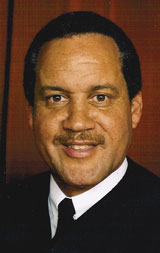
GORDON BARANCO ’69,
J.D. ’72
Undergraduate major:
Political science
Graduate degree: Law
THEN
In 1966–69 Gordon Baranco was a star Aggie basketball player and, as a member of the UC Davis squad, shared in three league championships. He was part of the 1968–69 team that voted unanimously to award its Player of the Year honor to team trainer Dick Lewis—a gesture that illustrated the team’s selflessness and camaraderie. Outside of basketball, Baranco’s time at UC Davis, which coincided with the Vietnam War and the Civil Rights Movement, was crucial to his academic and civic development. He was inspired by the idea that law could be a vehicle to change society and, after graduating with a bachelor’s degree in political science, enrolled in law school. “I made some lifelong friendships with a number of people at UC Davis,” says Baranco, who notes that UC Davis benefited from a healthy political discourse in the late 1960s. “In spite of our social and political differences, we still shared certain values.”
NOW
Baranco earned his law degree from UC Davis in 1972 and subsequently practiced law for the San Francisco District Attorney’s Office, the San Francisco Neighborhood Legal Assistance Foundation and the state Department of Justice. At the age of 32, he became a judge after working as an attorney for just seven years. Now an Alameda County Superior Court judge, Baranco admits that he was “very lucky” to become a judge at a young age. His favorite part of the job, he says, is the public service and the opportunity to do things for others. “It’s a very stimulating job,” says Baranco, “and it forces me to learn new things all the time.”

BOB BLACK ’73, J.D. ’76
Undergraduate major:
Political science
Graduate degree: Law
THEN
Bob Black was one of the most tenacious and committed student government leaders in UC Davis history, and his name is synonymous with many of the distinct UC Davis institutions for which the campus is now known. As ASUCD student body president in 1966–67, Black formed a close working relationship with Chancellor Emil Mrak, as well as many other campus officials. Working with administrators, and at times defying them, Black and his student colleagues played a leading role in creating Unitrans, the Coffee House and the Experimental College. These institutions forever altered student life at UC Davis, and today’s students have Black to thank. “We oversaw a shift in student government from an educational phenomenon to an actual governmental phenomenon,” Black says. “The foundation of our success was to commit to the idea fully at the student government level and then to approach members of the administration who could help make it happen.”
NOW
Black dropped out of UC Davis in 1967 before his senior year, worked on and off with the antiwar movement and traveled to the East Coast, to Mexico and to Oregon. In 1969 he returned to Davis, opened a health-food store and, in 1972, was elected to the city council at the age of 25. Following his election he re-enrolled at UC Davis for summer sessions, becoming the first UC Davis student to concurrently serve on the Davis City Council. Black graduated in 1973, earned a law degree at UC Davis and practiced law in Davis for 22 years, representing, among other clients, ASUCD. In the mid-1990s, Black—an avid backpacker—relocated to rugged Del Norte County, near the Oregon border. He is now the city attorney for Crescent City.

BRIAN TOM,
J.D. ’70
Graduate degree: Law
THEN
Brian Tom led a coalition of students that founded UC Davis’ Asian American Studies Program, the first and only student-founded academic program in the university’s history. As the founding coordinator of the program, a job he held while concurrently enrolled in law school, Tom hired the first Asian American studies professor at UC Davis and taught three of the program’s courses. “There was a need that the university hadn’t addressed,” Tom says, “so we researched university regulations and found that we could create a division of a department.” Tom and his fellow students also spearheaded an Asian American Studies research project, one of the first such projects in American academia.
NOW
In 2007, Tom, an attorney by trade, founded the Chinese American Museum of Northern California in his hometown of Marysville. “Marysville is a very important Chinatown from that era; it was a supply point for northern mines,” Tom says. “It is the only surviving Chinatown in Northern California that dates back to the 1800s, to the Gold Rush.” As the museum grows, Tom will launch research projects as a way to reexamine Chinese American history, especially in light of the changes happening in China today. One of his goals is to show how China’s political history from the late 1800s has been significantly shaped by Chinese in America. In addition, Tom is co-author of Marysville’s Chinatown, a historical book that will be released this fall.

SETHANNE HOWARD ’65
Undergraduate major: Physics
THEN
Sethanne Howard was the first woman to graduate from UC Davis with a degree in physics. Being the only woman in the program, says Howard, could get “a bit lonely, because none of the men wanted to study with me.” However, the education she received at UC Davis gave her a solid foundation for her career as an astrophysicist, which included stints at the National Science Foundation in Arlington, Va., NASA headquarters in Washington, D.C., and the Los Alamos National Laboratory in New Mexico.
NOW
Howard, who also holds a master’s degree in nuclear physics from New York’s Rensselaer Polytechnic Institute, returned to school at age 42 and earned a Ph.D. in astrophysics from Georgia State University. Howard was later hired as the first female director of the U.S. Naval Observatory’s Chief Nautical Almanac Office. She retired from that post in 2004 and has since written a book, Hidden Giants, a history of women in science over the past 4,000 years. Howard, through a partnership with the University of Alabama, now studies the heavens from the comfort of her home in Maryland. Whenever she gets an urge to check on her galaxies, she need not put her eye to a telescope, just log on to her computer.
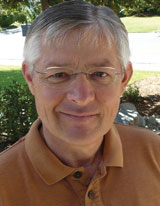
ROBB RODDEN ’71, ’78
Undergraduate majors: Political science, nutrition science
THEN
As a member of ASUCD’s Legislative Assembly, Robb Rodden helped get the Coffee House off the ground with the help of a dedicated and open-minded group of students and administrators. Bob Black had pursued the initial idea for the CoHo, but his plan to site the business in downtown Davis had met resistance from both the campus and city. Rodden and fellow alum Joe Downey ’69 approached campus administrator Ed Spafford about using an on-campus facility, East Hall, an old dining commons that was slated for demolition at an undetermined date. Spafford wasn’t elated about the idea but approved the use of the building. Rodden and company secured a $10,000 ASUCD grant to get the project rolling. “The administration certainly was not encouraging us to move in this direction,” Rodden says, “but at the same time they acknowledged that our project was speaking to a recognized need for students and gave us enough leeway to either succeed or totally mess up.”
NOW
Rodden has been working as a teacher in Davis since 1987. He has served as an elementary and high school principal at four different sites and, because of his extensive educational experience, is occasionally recruited as an administrative specialist to help open new schools. After recently finishing a stint as principal at Korematsu Elementary, Rodden is now working as a sixth-grade teacher for the Gifted and Talented Education program at North Davis Elementary.
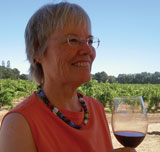
MARYANN GRAF ’65
Undergraduate major:
Food science (emphasis in viticulture and enology)
THEN
MaryAnn Graf was the first woman to graduate from UC Davis with a viticulture and enology concentration. But Graf says that her experience as a groundbreaking student was not isolating. The viticulture and enology program was full of students from other countries, Graf notes, so everyone seemed a bit different. It wasn’t until 1973, when Graf became the first female head winemaker at Simi Winery in Sonoma County that the story garnered attention. “Simi had changed owners around that time, and the company had been in the news,” Graf says. “It wasn’t until that point that the publicity about me really began rolling.”
NOW
After leaving her post as head winemaker at Simi Winery in 1979, Graf partnered with fellow winemaker Marty Bannister to form Vinquiry, a wine-testing lab and consulting company. Graf and Bannister built their company into a powerhouse by providing technological know-how to wine industry clients seeking increasingly better ways to analyze the chemistry of wine. From their original headquarters in a former medical office in Healdsburg, Graf and Bannister expanded to four locations throughout California. Graf retired a few years ago after selling her shares in Vinquiry, although she still consults for the company. And this year she was recognized by the California State Fair with a lifetime achievement award for her contributions to the wine industry.
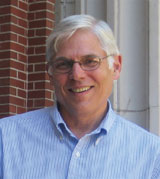
DAVID HUBIN ’71, M.A. ’73
Undergraduate major: History
Graduate degree: History
THEN
David Hubin, ASUCD president in 1969–70, was heir to the action-oriented student government model that Bob Black put in place. Like Black, Hubin was known for working closely with members of the UC Davis administration to achieve ASUCD goals, but also for challenging those administrators. In response to the shooting of a UC Berkeley student at People’s Park in May 1969, Hubin led a march from the Memorial Union to the steps of Mrak Hall, where the students lowered the American flag from the flagpole. When Chancellor Jim Meyer confronted the students, Hubin asked, “Are you with us or with the governor?” referring to then-Gov. Ronald Reagan, a staunch opponent of the student activism in Berkeley who’d ordered police intervention at People’s Park. Meyer told the students that he empathized with their anguish over the shooting.
NOW
Despite the pressures imposed on their relationship by the heightened political climate of the Vietnam era, Hubin and Meyer worked well together during Hubin’s time as head of Aggie student government. “Things could have gotten out of control, but Jim Meyer didn’t let communication break down,” Hubin says. “He and other administrators showed good judgment that other campuses didn’t demonstrate.” Hubin and Meyer became lifelong friends, and when Meyer passed away in 2002, his family asked Hubin to speak at the memorial service. Now the executive assistant president of the University of Oregon, Hubin faces many of the same challenges that Meyer faced. One of his many duties is to serve as liaison between the president’s office and the student government. “As I have moved on in academic administration, I have looked back on Jim Meyer and his willingness to sit down with us and listen to our concerns. That rises as a model.”
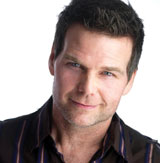
BO EASON ’83
Undergraduate major:
Political science
THEN
When Bo Eason showed up at Toomey Field for his first UC Davis football tryout as a freshman in 1979, he realized he was much smaller than most of the other players. The Walnut Grove native, who was a passionate Aggie football fan as a kid, could have easily given up and watched from the sidelines. However, Eason hung around practices as long as he could manage and devoted himself to perfecting his game. He eventually packed on 50 pounds and two inches in height, and became a star player. As legendary Aggie football coach Jim Sochor put it, Eason “recruited himself” to UC Davis through his hard work. In 1984, the year after he graduated, the Houston Oilers chose Eason in the second round of the NFL draft.
NOW
In 1987, the Oilers were scheduled to play the New England Patriots, who were quarterbacked by Eason’s older brother, Tony. Eason was apprehensive about the game. As a defensive player, he’d be going head-to-head against his brother, who was also his best friend, yet he couldn’t justify playing below his potential. Just weeks before the scheduled contest, the NFL Players Association went on strike, and the game was canceled. “That story always haunted me,” says Eason. “Two brothers who grow up very close, who were best friends, have to compete against each other at the highest level. . . . I always wondered what would have happened.” So, after retiring from football, Eason wrote a play about his internal struggle, about what might have happened if the game had been played. The result is Eason’s one-man play, Runt of the Litter. Over the past decade he has performed the play nationwide, received excellent reviews and secured a deal to make the play into a film. Capitalizing off this success as an actor and playwright, Eason has built side careers as a motivational speaker for schools and corporations, and as a screenwriter. Currently, Eason is writing the screenplay for a project greenlit by Leonardo DiCaprio’s production company.
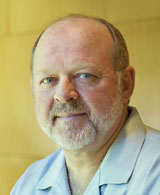
DAVID MOSHER ’75
Major: Geography
THEN
David Mosher was nominated for Homecoming queen in 1973 by his Regan Hall dormmates in protest of what they saw as a sexist, antiquated contest—and he won, in a landslide. “They thought of nominating a dog or a cat, or something strange, and then my name came up,” Mosher says. “I said, sure, what the heck.” His coronation made international news, and the story was featured in Newsweek, among other publications. Mosher even appeared on Tom Snyder’s The Tomorrow Show, a late-night talk show on NBC that followed Johnny Carson. Despite making enemies with the fraternities and other campus traditionalists—and receiving a fair share of hate mail—Mosher believes his election did some good. “I think it opened up a few people’s minds.”
NOW
Mosher moved to Santa Barbara after graduating from UC Davis and earned a second degree, in photography, from Brooks Institute of Photography. He has been involved in the wine and food industry for more than three decades and now works in sales and marketing for Merryville Vineyards in St. Helena. Mosher is an involved alumnus, regularly attending both Aggie football games and the annual Aggie Auction. In 2005, at age 52, Mosher overcame a bout with prostate cancer, his second battle with cancer. As a show of support and in recognition of his commitment to UC Davis Athletics, Athletic Director Greg Warzecka and Assistant Athletic Director Mike Angius put Mosher’s name on two seats in brand new Aggie Stadium. “They helped me through a really hard time in my life.”
Neil Freese ’02 is CAAA’s communications officer.
